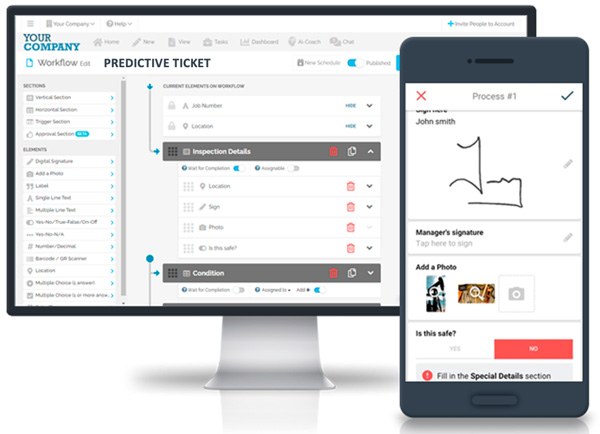As the oil and gas industry continues to evolve, companies are increasingly turning to big data analytics to enhance their operations. One area where this technology is making a significant impact is in predictive maintenance. With the help of FAT FINGER, a digital workflow procedure builder, oil and gas companies can leverage big data to predict equipment failures, reduce downtime, and improve overall operational efficiency.
Understanding Predictive Maintenance
Predictive maintenance is a proactive approach that uses data analysis tools to predict potential equipment failure. This method employs various data sources such as data from sensors, historical data, and real-time monitoring data. The data is then analyzed using machine learning algorithms, statistics, and modeling to predict the likelihood of equipment failure.
On the contrary, traditional reactive maintenance involves waiting for equipment to fail before carrying out repairs or replacements. This approach can be costly as it often leads to unplanned downtime and interruption of operations. It also increases the risk of secondary damage to other parts of the equipment.
Moreover, reactive maintenance does not take into account the preventive measures that could be taken to avoid equipment failure in the first place. This is where predictive maintenance holds the edge, as it enables organizations to identify potential problems and address them before they escalate.
Overall, predictive maintenance is a more cost-effective and efficient approach compared to reactive maintenance. It leverages data analysis to make informed decisions about equipment maintenance, leading to improved operational efficiency and reduced costs.

The Role of Big Data in Predictive Maintenance
Big data analytics plays a crucial role in predictive maintenance by providing insights into equipment performance and potential issues. By analyzing large volumes of data from various sources, companies can identify patterns and trends that may indicate an impending equipment failure.
- Real-time monitoring: Big data allows for continuous monitoring of equipment, providing real-time updates on performance and potential issues.
- Historical analysis: By analyzing historical data, companies can identify patterns and trends that may indicate an impending equipment failure.
- Forecasting: big data analytics can also be used to forecast future equipment performance based on current and historical data.
FAT FINGER and Predictive Maintenance

FAT FINGER is a digital workflow procedure builder that empowers front-line teams to do their work correctly every time. It allows companies to build checklists, workflows, and digital procedures that unlock operational excellence. In the context of predictive maintenance, FAT FINGER can be used to create workflows for tasks such as work order checklists, mobile asset inspections, and preventive maintenance inspections.
Case Study: FAT FINGER in Action
One oil and gas company used FAT FINGER to streamline its predictive maintenance processes. The company was able to reduce equipment downtime by 20% and increase overall operational efficiency by 15%. This was achieved by using FAT FINGER’s drag & drop workflow builder to create custom workflows for equipment inspections and maintenance tasks.
Conclusion
big data analytics is revolutionizing the way oil and gas companies approach predictive maintenance. By leveraging this technology, companies can predict equipment failures, reduce downtime, and improve overall operational efficiency. Tools like FAT FINGER make it easy to implement predictive maintenance workflows, providing a practical solution for companies looking to harness the power of big data.
Ready to take your predictive maintenance to the next level? Sign up for FAT FINGER or request a demo today to see how our digital workflow procedure builder can empower your front-line teams and unlock operational excellence.


